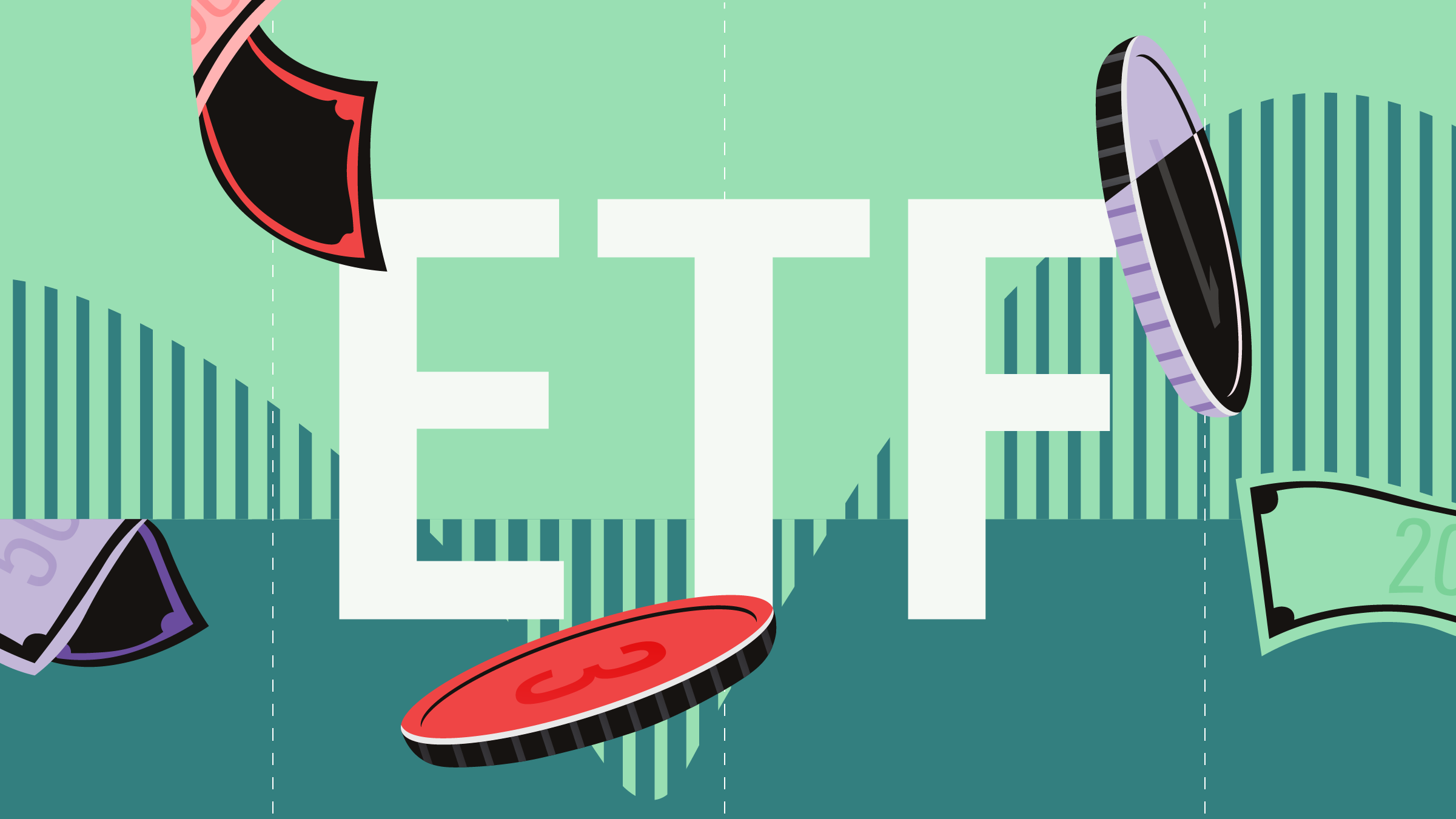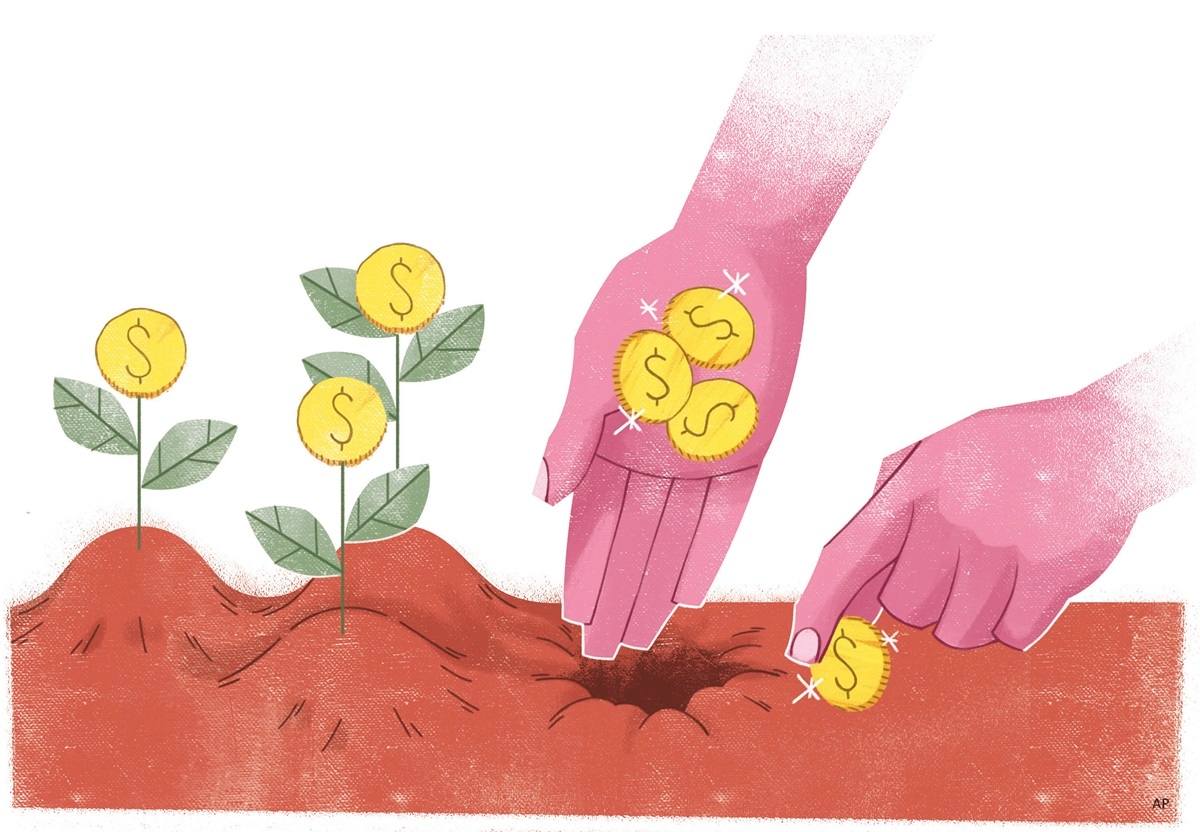
Exchange-traded funds, or ETFs, are often low-cost instruments for investors to track popular indexes or leverage experienced manager choices in an attempt to beat the market. The best ones serve as building blocks for a portfolio, and unlike open-end mutual funds, all ETFs are traded throughout the day on an exchange.
In the first quarter of 2024, the top-performing ETFs included global equity funds Dynamic Active Global Dividend ETF DXG and US equity fund Dynamic Active US Dividend ETF DXU. The worst performers included BMO Clean Energy Index ETF ZCLN and BMO Long Federal Bond Index ETF ZFL. Data in this article is sourced from Morningstar Direct.
Screening for the Best- and Worst-Performing ETFs
To find the quarter's best- and worst-performing ETFs, we screened equity, allocation, and fixed income funds that trade within Canada for those that have at least C$10 million in total assets. We narrowed the list to only ETFs with parent pillars for their Morningstar Medalist Ratings of average or above, meaning our analysts believe they're backed by industry-standard asset management companies. We also excluded exchange traded notes, known as ETNs.
Within our list, four funds fell into the US equity category, where the average name rose 12% in the first quarter.
Among the worst-performing ETFs, six were from the Canadian long term fixed income category, where funds fell 4.2% in the first quarter.
Returns for the best- and worst-performing ETFs ranged from 21.7% to negative 8.6%, a gap of 30.2 percentage points.
The 10 Best-Performing ETFs for Q1 2024:
- Dynamic Active Global Dividend ETF DXG
- Dynamic Active US Dividend ETF DXU
- Fidelity US Momentum ETF FCMO
- Middlefield Innovation Dividend ETF MINN
- Horizons S&P/TSX Capped Energy Index ETF HXE
- iShares S&P/TSX Capped Energy Index ETF XEG
- Fidelity US Value ETF FCUV
- TD Active US Enhanced Dividend ETF TUED
- Vanguard Global Momentum Factor ETF VMO
- TD Active Global Enhanced Dividend ETF TGED
The 10 Worst-Performing ETFs for Q1 2024:
- BMO Clean Energy Index ETF ZCLN
- BMO Long Federal Bond Index ETF ZFL
- Invesco Long Term Government Bond Index ETF PGL
- TD Canadian Long Term Federal Bond ETF TCLB
- BMO Long Provincial Bond Index ETF ZPL
- Vanguard Canadian Long-Term Bond Index ETF VLB
- iShares Core Canadian Long Term Bond Index ETF XLB
- BMO MSCI China ESG Leaders Index ETF ZCH
- BMO Real Return Bond Index ETF ZRR
- iShares Canadian Real Return Bond Index ETF XRB
Metrics for the Best-Performing ETFs
Dynamic Active Global Dividend ETF
- Morningstar Rating: 4 stars
- Expense Ratio: 0.82%
- Morningstar Category: Global Equity
The C$673 million Dynamic Active Global Dividend ETF was the best-performing ETF in the first quarter, with a 21.7% return. The return on the actively managed Dynamic Funds ETF topped the 10% gain on the average fund in Morningstar’s global equity category for the quarter. Over the last 12 months, the Dynamic Active Global Dividend ETF has returned 32.1%, outperforming the 20.1% gain on the average fund in its category, leaving the ETF in the 8th percentile.
The Dynamic Active Global Dividend ETF has a Morningstar Medalist Rating of Gold. It was launched in January 2017.
Dynamic Active US Dividend ETF
- Morningstar Rating: 3 stars
- Expense Ratio: 0.81%
- Morningstar Category: US Equity
The second-best-performing ETF in the first quarter was the C$146 million Dynamic Active US Dividend ETF. The actively managed Dynamic Funds ETF returned 21.6%, outperforming the average US equity fund, which gained 12%. Looking back over the last 12 months, the Dynamic Active US Dividend ETF has returned 32.6%, outperforming the 27.1% return on the average fund in its category, leaving the ETF in the 22nd percentile.
The Gold-rated Dynamic Active US Dividend ETF was launched in January 2017.
Fidelity US Momentum ETF
- Morningstar Rating: 3 stars
- Expense Ratio: 0.37%
- Morningstar Category: US Equity
The C$170 million Fidelity US Momentum ETF ranked third for the quarter, returning 20.6%. The Fidelity International ETF, which is passively managed, topped the 12% average return on funds in the US equity category for the first quarter. Over the last 12 months, the ETF has returned 36.6%, ahead of the 27.1% gain on the average fund in its category, leaving the ETF in the 15th percentile.
The Fidelity US Momentum ETF, launched in June 2020, has a Morningstar Medalist Rating of Silver.
Middlefield Innovation Dividend ETF
- Morningstar Rating: 4 stars
- Expense Ratio: 1.42%
- Morningstar Category: Canada FUND Global Dividend & Income Equity
With a 19.4% return, the C$100 million Middlefield Innovation Dividend ETF ranked fourth in the quarter. The actively managed Middlefield ETF outperformed the 9.6% return on the average Canada fund global dividend & income equity fund. Over the last 12 months, the fund has gained 46.1%, ahead of the 18.3% return on funds in its category, placing it in the 1st percentile for the period.
The Middlefield Innovation Dividend ETF has a Neutral Morningstar Medalist Rating. It was launched in March 2018.
Horizons S&P/TSX Capped Energy Index ETF
- Morningstar Rating: 3 stars
- Expense Ratio: 0.28%
- Morningstar Category: Energy Equity
The fifth-best-performing ETF was the C$114 million Horizons S&P/TSX Capped Energy Index ETF, which gained 18.8% in the first quarter. This passively managed Horizons ETF beat the 11.7% average return on funds in the energy equity category. Over the past year, the Horizons S&P/TSX Capped Energy Index ETF rose 29%, outperforming the 19.5% return on the average fund in its category and placing it in the 6th percentile.
The Horizons S&P/TSX Capped Energy Index ETF, launched in September 2013, has a Morningstar Medalist Rating of Gold.
iShares S&P/TSX Capped Energy Index ETF
- Morningstar Rating: 3 stars
- Expense Ratio: 0.60%
- Morningstar Category: Energy Equity
The C$1.9 billion iShares S&P/TSX Capped Energy Index ETF was the sixth-best-performing Canadian ETF in the first quarter, with an 18.7% return. The return on the passively managed iShares ETF topped the 11.7% gain on the average fund in Morningstar’s energy equity category. Looking back over the last 12 months, the iShares S&P/TSX Capped Energy Index ETF has returned 28.5%, outperforming the 19.5% return on the average fund in its category, leaving the ETF in the 11th percentile.
The Silver-rated iShares S&P/TSX Capped Energy Index ETF was launched in March 2001.
Fidelity US Value ETF
- Morningstar Rating: 5 stars
- Expense Ratio: 0.39%
- Morningstar Category: US Equity
The seventh-best-performing ETF in the first quarter was the C$399 million Fidelity US Value ETF. The passively managed Fidelity International ETF returned 18%, outperforming the average US equity fund, which gained 12%. Looking back over the last 12 months, the Fidelity US Value ETF has returned 35%, outperforming the 27.1% return on the average fund in its category, leaving the ETF in the 17th percentile.
The Fidelity US Value ETF has a Morningstar Medalist Rating of Silver. It was launched in June 2020.
TD Active US Enhanced Dividend ETF
- Morningstar Rating: 5 stars
- Expense Ratio: 0.73%
- Morningstar Category: US Equity
The C$300 million TD Active US Enhanced Dividend ETF ranked eighth for the quarter, returning 17.5%. The TD ETF, which is actively managed, topped the 12% average gain on funds in the US equity category. Over the last 12 months, the TD ETF has returned 37.8%, ahead of the 27.1% return on the average fund in its category, leaving it in the 12th percentile for performance.
The Bronze-rated TD Active US Enhanced Dividend ETF was launched in May 2020.
Vanguard Global Momentum Factor ETF
- Morningstar Rating: 5 stars
- Expense Ratio: 0.38%
- Morningstar Category: Global Equity
With a 17.2% gain, the C$136 million Vanguard Global Momentum Factor ETF ranked ninth in the first quarter. The actively managed Vanguard ETF outperformed the 10% return on the average global equity fund. Over the last 12 months, the fund has returned 32.2%, ahead of the 20.1% return on funds in its category, placing it in the 7th percentile.
The Vanguard Global Momentum Factor ETF, launched in June 2016, has a Morningstar Medalist Rating of Gold.
TD Active Global Enhanced Dividend ETF
- Morningstar Rating: 5 stars
- Expense Ratio: 0.72%
- Morningstar Category: Global Equity
The tenth-best performing ETF was the C$534 million TD Active Global Enhanced Dividend ETF, which gained 16.9% in the first quarter. The actively managed TD ETF beat the 10% average return on funds in the global equity category. Over the past year, the TD Active Global Enhanced Dividend ETF rose 32.6%, outperforming the 20.1% return on the average fund in its category and placing it in the 7th percentile.
The TD Active Global Enhanced Dividend ETF has a Morningstar Medalist Rating of Bronze. It was launched in May 2019.
Metrics for the Worst-Performing ETFs
BMO Clean Energy Index ETF
- Morningstar Rating: 1 star
- Expense Ratio: 0.39%
- Morningstar Category: Global Small/Mid Cap Equity
The worst-performing ETF in the first quarter was the C$68 million BMO Clean Energy Index ETF, which lost 8.6%. The passively managed BMO ETF underperformed the average 4.8% gain on funds in the global small/mid cap equity category in the first quarter. Over the past 12 months, the BMO Clean Energy Index ETF fell 28.2%, placing it in the 94th percentile within its category and underperforming the 9.8% return on the average fund.
The ETF takes environmental, social, and governance criteria into consideration. This fund has a Morningstar Medalist Rating of Gold.
BMO Long Federal Bond Index ETF
- Morningstar Rating: 2 stars
- Expense Ratio: 0.22%
- Morningstar Category: Canadian Long Term Fixed Income
With a 4.9% loss, the C$3.3 billion BMO Long Federal Bond Index ETF was the second-worst-performing ETF on our list for the first quarter. The passively managed BMO ETF performed roughly in line with the average 4.2% loss on funds in the Canadian long term fixed income category. Over the past 12 months, the BMO Long Federal Bond Index ETF lost 3%, placing it in the 89th percentile within its category and falling further than the 0.6% loss on the average fund.
The BMO Long Federal Bond Index ETF has a Negative Morningstar Medalist Rating, meaning that our analysts expect it to be one of the worst performers within its category and think it is unlikely to deliver positive returns after fees.
Invesco Long Term Government Bond Index ETF
- Morningstar Rating: 3 stars
- Expense Ratio: 0.28%
- Morningstar Category: Canadian Long Term Fixed Income
The third-worst-performing ETF in the first quarter was the C$303 million Invesco Long Term Government Bond Index ETF, which fell 4.3%. The Invesco ETF, which is passively managed, performed roughly in line with the average 4.2% loss on funds in the Canadian long term fixed income category. Over the past 12 months, the ETF fell 1% to place in the 56th percentile within its category, roughly in line with the category's average 1-year loss of 0.6%.
The Invesco Long Term Government Bond Index ETF has a Morningstar Medalist Rating of Neutral. It was launched in June 2011.
TD Canadian Long Term Federal Bond ETF
- Morningstar Rating: 3 stars
- Expense Ratio: 0.23%
- Morningstar Category: Canadian Long Term Fixed Income
The C$1.7 billion TD Canadian Long Term Federal Bond ETF was the fourth-worst-performing ETF in the first quarter, with a loss of 4.1%. The actively managed TD ETF performed roughly in line with the average 4.2% loss on funds in the Canadian long term fixed income category. Over the past year, the ETF dropped 2% to land in the 67th percentile within its category, dropping further than the category's average one-year loss of 0.6%.
The Neutral-rated TD Canadian Long Term Federal Bond ETF was launched in November 2019.
BMO Long Provincial Bond Index ETF
- Morningstar Rating: 3 stars
- Expense Ratio: 0.28%
- Morningstar Category: Canadian Long Term Fixed Income
Fifth-worst was the C$256 million BMO Long Provincial Bond Index ETF, which lost 4% in the first quarter. The passively managed BMO ETF performed roughly in line with the average 4.2% decline on funds in the Canadian long term fixed income category. Over the past year, the BMO Long Provincial Bond Index ETF fell 0.1%, finishing in the 45th percentile within its category. It performed roughly in line with the category's average one-year loss of 0.6%.
The BMO Long Provincial Bond Index ETF has a Morningstar Medalist Rating of Bronze. It was launched in March 2013.
Vanguard Canadian Long-Term Bond Index ETF
- Morningstar Rating: 3 stars
- Expense Ratio: 0.17%
- Morningstar Category: Canadian Long Term Fixed Income
The sixth-worst-performing ETF in the first quarter was the C$242 million Vanguard Canadian Long-Term Bond Index ETF, which lost 3.8%. The passively managed Vanguard ETF performed roughly in line with the average 4.2% loss on funds in the Canadian long term fixed income category. Over the past 12 months, the Vanguard Canadian Long-Term Bond Index ETF rose 0.3%, placing it in the 30th percentile within its category and roughly in line with the 0.6% loss on the average fund.
The Vanguard Canadian Long-Term Bond Index ETF has a Morningstar Medalist Rating of Gold. It was launched in January 2017.
iShares Core Canadian Long Term Bond Index ETF
- Morningstar Rating: 4 stars
- Expense Ratio: 0.20%
- Morningstar Category: Canadian Long Term Fixed Income
With a 3.7% loss, the C$1.2 billion iShares Core Canadian Long Term Bond Index ETF was the seventh-worst-performing ETF on our list for the first quarter. The passively managed iShares ETF performed roughly in line with the average 4.2% loss on funds in the Canadian long term fixed income category. Over the past 12 months, the iShares Core Canadian Long Term Bond Index ETF gained 0.7%, placing it in the 12th percentile within its category and outperforming the 0.6% loss on the average fund.
The iShares Core Canadian Long Term Bond Index ETF, launched in November 2006, has a Morningstar Medalist Rating of Silver.
BMO MSCI China ESG Leaders Index ETF
- Morningstar Rating: 1 star
- Expense Ratio: 0.67%
- Morningstar Category: Greater China Equity
The eighth-worst-performing ETF in the first quarter was the C$84 million BMO MSCI China ESG Leaders Index ETF, which fell 2%. The BMO ETF, which is passively managed, underperformed the average 0.9% gain on funds in the Greater China equity category. Over the past 12 months, the ETF fell 20.6% to place in the 75th percentile within its category, dropping further than the average one-year loss of 18%.
The BMO MSCI China ESG Leaders Index ETF, launched in January 2010, has a Morningstar Medalist Rating of Negative.
BMO Real Return Bond Index ETF
- Morningstar Rating: 3 stars
- Expense Ratio: 0.28%
- Morningstar Category: Canadian Inflation-Protected Fixed Inc
The C$84 million BMO Real Return Bond Index ETF was the ninth-worst-performing ETF in the first quarter, with a decline of 1.9%. The passively managed BMO ETF performed better than the average 3% loss on funds in the Canadian inflation-protected fixed inc category. Over the past year, the ETF dropped 0.2% to land in the 13th percentile, falling less than the category's average one-year loss of 1.6%.
The BMO Real Return Bond Index ETF has a Morningstar Medalist Rating of Bronze. It was launched in May 2010.
iShares Canadian Real Return Bond Index ETF
- Morningstar Rating: 4 stars
- Expense Ratio: 0.39%
- Morningstar Category: Canadian Inflation-Protected Fixed Inc
Tenth-worst was the C$298 million iShares Canadian Real Return Bond Index ETF, which lost 1.9% in the first quarter. The passively managed iShares ETF dropped less than the average 3% loss on funds in the Canadian inflation-protected fixed inc category for the quarter. Over the past year, the iShares Canadian Real Return Bond Index ETF rose 0%, finishing the 12-month period in the 1st percentile within the Canadian inflation-protected fixed inc category. It outperformed the category's average one-year loss of 1.6%.
The Gold-rated iShares Canadian Real Return Bond Index ETF was launched in December 2005.
What Are ETFs?
Exchange-traded funds are investments that trade throughout the day on stock exchanges, much like individual stocks. They differ from traditional mutual funds—known as open-end funds—which can only be bought or sold at a single price each day. Historically, ETFs have tracked indexes, but in recent years, more ETFs have been actively managed. ETFs cover a range of asset classes, including stocks, bonds, commodities, and most recently cryptocurrency.
The Best ETFs: More Ideas to Consider
Investors who would like to find more of the top-performing or cheapest ETFs can do the following:
- Use the ETF Screener tool to find the best ETFs according to your specific criteria. You can search for funds based on their fees, Morningstar Medalist Ratings, manager tenures, and more.
- Find ideas specific to your needs, or learn more about ETFs, on our ETF Insights page.
- Compare funds and ETFs side by side and easily follow their valuations, ratings, and fees.
This article was compiled by Bella Albrecht, edited by Lauren Solberg, and reviewed by Andrew Willis.
As part of our mission to put more information into the hands of investors, this article was compiled from Morningstar’s data and independent research using automation technology. The original article was written by Morningstar reporters and editors. This updated version was reviewed by an editor.




















